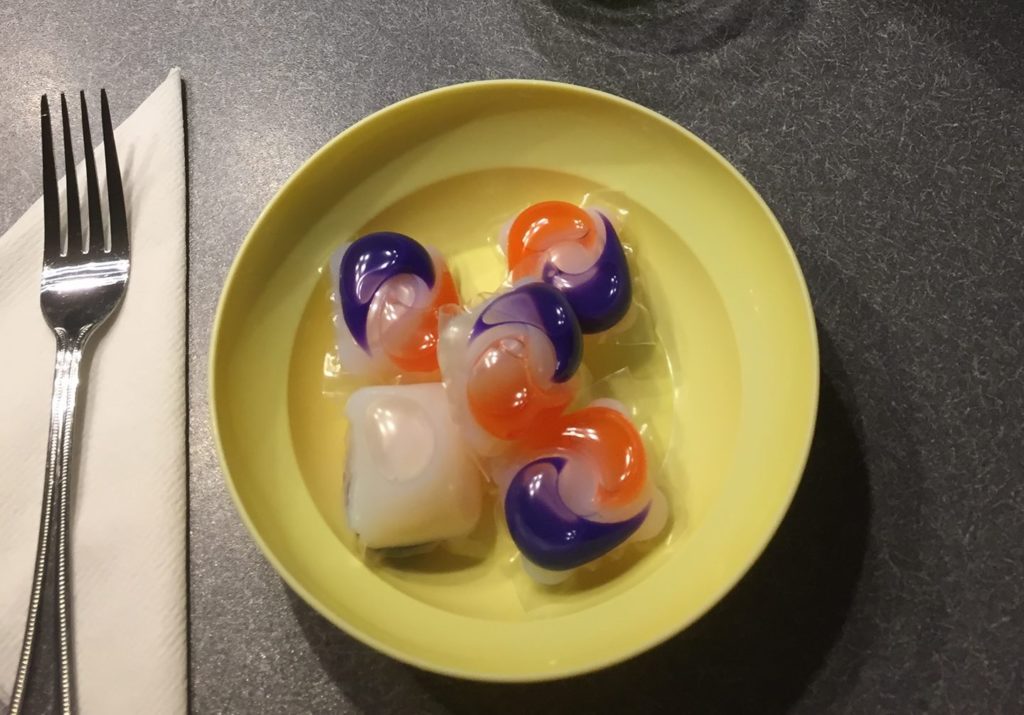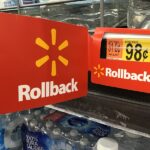
For the past month or so, a bizarre meme has reappeared around the internet, in which people claim to be eating laundry pods because they look so darned colorful and tasty. Couponers have co-opted the meme, as in the image above, to highlight a situation that’s all too familiar – there are so many coupons for household items and so few for food, that it looks like laundry pods are what’s for dinner!
Not really, of course. But if you spend your time clipping coupons and chasing deals, you’ve probably noticed that there are a lot more inexpensive soap and paper products in your house than there are things you can feed your family.
Now, a new analysis of coupons offered over the past year confirms that food coupons are getting even harder to find.
Kantar Media has released its annual look at newspaper free-standing insert (FSI) coupons. And three recent trends are still holding true – the number of available coupons is down, their average value is up, and there are fewer food coupons than ever before.
In 2017, Kantar found that nonfood coupons represented 72% of all FSI coupons, up from 70% in 2016 and 64% five years ago. That means only one out of every four coupons you get in your Sunday paper, is for something you can actually eat. You’ll have plenty of opportunities to save on products for cleaning your house and medicating yourself, but you’re increasingly likely to pay full price for your food.
The good news is that the coupons that are available, are more valuable. The average FSI food coupon had a face value last year of $1.22, up slightly from $1.20 in 2016. And the value of nonfood coupons continued to soar, reaching an all-time high of $2.29, way up from $2.15 the previous year. Personal care, health care and household products led the pack in terms of the number and average face value of coupons available, with health care product coupons’ average value reaching an impressive $2.93, up 10% from the previous year. The best that food coupons could do was to notch a 5% increase in the “shelf stable beverages” category, reaching an average value of $1.34.
It’s important to reiterate that this analysis only focused on newspaper insert coupons. Kantar has previously found that you can still save money on food – if you go digital. Kantar plans to release further details about digital coupons a little later this year. But last year’s analysis showed that food coupons were gravitating away from the printed page. In 2016, food coupons made up more than half of all digital coupons (54%), and their average face value was much larger – $1.48, more than 20% higher than paper food coupons.
Curiously, there’s one factor that helps make food coupons and newspaper inserts a perfect match. That’s if the food product is brand new. “Despite declining distribution in food, FSIs still remain a fundamental part of promotion, especially when introducing a new product to the market,” Kantar noted. Of all the new products introduced last year that ran coupons in the Sunday inserts, 65% were for food products, with snacks and cereals topping the list.
So could that be an emerging trend? Will newer food products start making more paper coupons available, or will they too start shifting over to digital, leaving nonfood items to dominate the printed inserts?
Well, consider this. The first inserts of the new year came out last Sunday – a whopping six of them, from SmartSource and RedPlum. There were up to 283 individual coupons available – and only 45 of them, or 16%, were for food items. And that’s if you consider gum, artificial sweeteners and condiments to be food.
Overall, there are still plenty of FSI coupons available. Kantar found that there were 274 billion offered in all last year, down slightly from 2016’s 280 billion. And their total face value was $545 billion, up from 2016’s $521 billion.
So there are still savings to be had. Just don’t get your hopes up for a ton of new food coupons in your Sunday inserts this year. Plan your spending and saving wisely, then – you don’t want to get to the point that pods for dinner doesn’t seem like such a bad idea anymore.











I think some of the blame for lack of food coupons lies with the Extreme Couponing tv show.Food manufacturers saw those food hoards too.